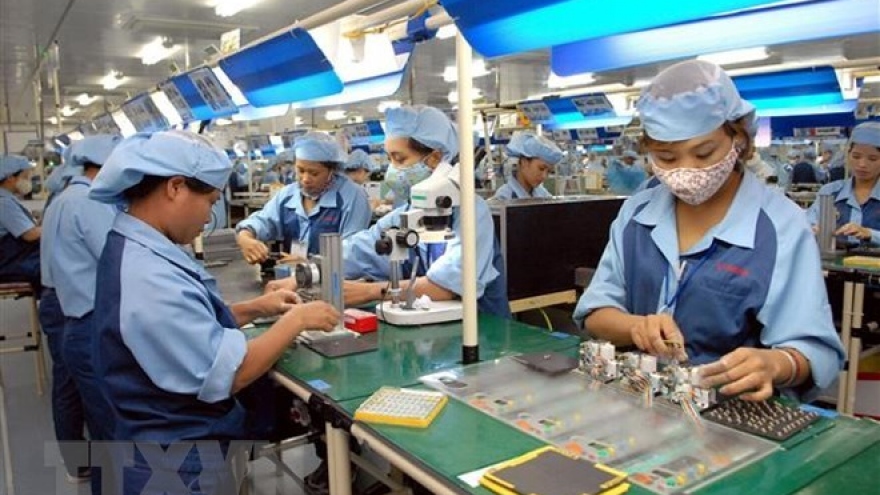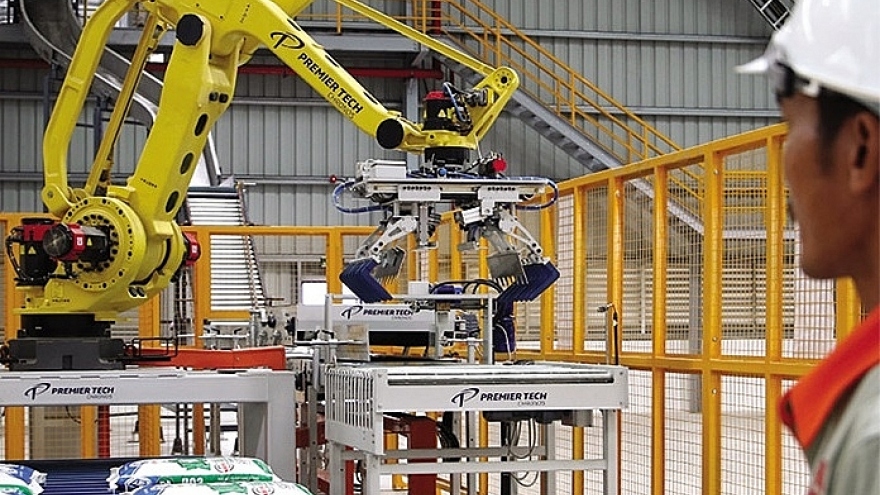Utilising FTAs to improve businesses
Vietnam’s accession to the Comprehensive and Progressive Agreement for Trans-Pacific Partnership (CPTPP), and the enforcement of the EU-Vietnam Free Trade Agreement (EVFTA) will set a string of challenges for local government and businesses to adopt an Industry 4.0 model in Vietnam.
 |
| By Tran Toan Thang |
The Ministry of Industry and Trade’s (MoIT) latest report on business readiness for Industry 4.0 in Vietnam stated that the proportion of enterprises that are ‘not ready’ or ‘little ready’ account for an average of 80 per cent. Accordingly, the figure for the manufacturing segment is 82 per cent, 85 per cent for textiles, 86 per cent for footwear, 86 per cent for garments, and 75 per cent for electronics.
Over the past few years, foreign investors have tended to take advantage of low-cost local labourers. In addition, while most domestic businesses are time and again bogged down in shortages of capital and technology, foreign enterprises keep high-technology processes in manufacturing mostly overseas.
Similar to Industry 4.0, the readiness for the EVFTA in Vietnam has seen limitations, according to our research over the last year. In addition, the readiness of the local government to support businesses in getting benefits from the agreement only stops at the direction of central-level agencies. Materialising the directions still needs significant time.
Issues with cheap labour
Currently, the average wage in Vietnam is about $300 per month, much lower than the Chinese average of more than $700 per month. Data shows that this advantage is still a big attraction factor for foreign investors to the country.
Since 2014, labour-intensive sectors like manufacturing, assembling, and energy still accounted for the majority of total foreign direct investment (FDI) in Vietnam.
The enforcement of the new FTAs will further help foreign investors take advantage of low-cost labour and boost exports.
For many businesses, a manufacturing line with a large number of labourers and no smart manufacturing may be the most efficient in Vietnam. Furthermore, FTA clauses only mention the efficiency and competiveness of businesses, without pointing out how to make them smarter.
Responding to our survey related to the necessity of Industry 4.0, a representative of VNPT Technology stated that pouring capital into a modern technology line in some manufacturing phases is quite costly, so taking advantage of cheap labour is the best way to optimise operation costs.
Hurdles from local policies
Vietnam’s incentive policies for the high-technology segment to reach Industry 4.0 have not been effective. Furthermore, the lack of uniformity between policies and local authorities implementing them also yields little benefit to businesses.
Another government approach is to establish a fund called the National Technology Innovation Fund. In fact, the fund’s resources are limited, and procedures to get the fund money are also made difficult for businesses.
In addition, the Vietnamese legal system does not allow enterprises to repeatedly apply accelerated depreciation. Added to the fact that the annual interest rate on investment loans is 9-10 per cent, which is 3-4 per cent higher than in other countries, this discourages enterprises from making heavy investments in technology in Vietnam.
Currently, many technologies become outdated after only two or three years of operation, leading to far larger intangible depreciation costs than tangible costs. As a result, businesses will face huge risks if they are not allowed to fully apply accelerated depreciation.
Furthermore, the Vietnamese government’s policy to eliminate the tariff barrier on components has created a back-action of boosting imports rather than manufacturing. Once manufacturing activities are limited, value chains, which contain smart and high-tech processes, will be steadily removed from Vietnam. As a result, once businesses keep taking advantage of low-cost imports, it is very difficult to force them to synchronise and apply smart technology in their manufacturing lines.
Reforming local systems
Our research states that some South Korean-based companies have started thinking about long-term investment in Vietnam. Accordingly, a representative of one South Korean supplier, who wishes to be unnamed, told us that in the first two years, the company only focused on assembling. However, based on the uptrend of Vietnamese economic prospects, from the third year it has been in Vietnam, it started thinking about investment in a more modern technology manufacturing chain.
Thus, local institution reforms need to be ensured synchronously among all management levels. This will help investors ensure their long-term investment, not just their short-term plans. Specifically, it is necessary to translate authorised agencies’ commitments into concrete actions in favour of enterprises and investors.
In addition to reforming institutions, businesses in Vietnam would be able to expect long-term investment thanks to the country’s FTA commitments which will force Vietnam to improve the investment environment.
Our survey about the CPTPP and the EVFTA stated that labour-intensive industries like textiles, garments, and footwear will keep getting benefits, including export and output growth, while capital-intensive industries will suffer negative impacts.
Moreover, some labour-intensive industries may become capital-intensive industries one day. For instance, if applying robotics to garment manufacturing lines, the segment will become a capital-intensive industry. However, it remains a marked trend that capital cost has to fall and labour cost has to rise to boost modernisation. Robotics will appear in some manufacturing phases.
In the long-term, FTAs will help broaden the local economy, leading to balance between the labour cost and the capital cost. As a result, it will boost capital-intensive industries, and of course, Vietnam will get closer to Industry 4.0.


